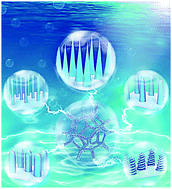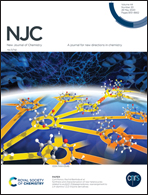Self-supported molybdenum doping Ni3S2 nanoneedles as efficient bifunctional catalysts for overall water splitting†
Abstract
Owing to the global energy crisis and serious environmental contamination, there is an urgent need to search for highly active and stable non-noble metal based electrocatalysts to reduce the energy losses for the hydrogen evolution reaction (HER) and the oxygen evolution reaction (OER) but it is still a significant challenge. In this work, self-supported Mo-doped Ni3S2 (denoted as Mo-Ni3S2/NF) was successfully assembled via a facile one-step hydrothermal method and used as a bifunctional electrocatalyst. A series of controllable morphologies were achieved by changing the molar ratios of reactants to study the influencing factors of electrocatalytic activity. The as-obtained Mo-doped Ni3S2/NF nanoneedles exhibit excellent electrocatalytic activities with a low overpotential of 170 mV to deliver a current density of 10 mA cm−2 for the HER and an excellent overpotential of 174 mV at a current density of 50 mA cm−2 for the OER. When used as both a cathode and an anode for overall water splitting in two electrode configuration (1 M KOH aqueous electrolyte), Mo-Ni3S2/NF nanoneedles exhibit outstanding activity (an external voltage of 1.49 V to display a stable current density of 10 mA cm−2) and impressive durability (no obvious degradation at a constant voltage for up to 24 h). This work provides a promising avenue of incorporating the nanostructure design with compositional modulation to synthesize bifunctional electrocatalysts of superior activity and delicate stability.



 Please wait while we load your content...
Please wait while we load your content...